Touch
Geir Jenssen lives in a different world. From his Artic Circle perchthe man called Biosphere is building a body of work as iconoclastic asAphex Twin, with as much eerie remove and accidental influence. Albumslike
Patashnik and
Substrataare landmarks in ambient music not because they spawned a millionrip-offs but because they work within a recognizable stylisticblueprint to create absolutely alien music, threatening total immersionto even the most cautious of "background" listeners. Jenssen's last,2002's
Shenzhou found him treading further towards alienatingextremes, something like a pitch-black homage to Debussy, withorchestra samples stretched thin and opaque across an ocean of icy,crevice-filled ambience (in other words, what we all wished
Drukqs had been).
Autour,commissioned by French radio last year, not only rejects anything closeto a wide "radio" audience, but it is by far the most trying Biosphererelease thus far, with Jenssen moving past the beat-less transparenciesbegun with
Substrata and into a harsh meditation on deep-space,a 74-minute confined drift that begins well into the air-less upperregions and does not conclude until positioned hopelessly within adimensionless dump-off on the darker side of some heavenly body.Occupying a third of the disc's length, the opening "Translation" actslike the final kiss-off to Earth and the earthen sounds that often finda place in Biosphere music. A rebus of plastic tones, entwined withenough care to erase all human touch, becomes a sky-like ceiling withwhich groaning engine sounds and whining drones struggle in a pitilessslipping, past the threshold and into the heart of
Autour. Apart from a track or two based around a few distorted samples from a 60s radio dramatization of Jules Verne's
De la Terre à la Lune(the "focus" of the 2003 commission) and actual recordings of MIRastronauts, the majority of the disc develops a vacuous, unsettlingatmosphere made up of seriously subsonic bass frequencies and shrill,synthetic tones dividing and encasing the deliberate arcs and hiddentextures of each of the nine "movements." By the sixth track,"Circulaire," the trip has arrived at a false ending of sorts, anoff-putting climax where the piece grounds out to two dissentingsounds, one a near-inaudible below-bass pulse and the other thesinister calm of a solid flatline. From this remote place, more Onkyothan Eno, Jenssen really has nowhere to drift except slowly backtowards the beginning, to the lush plasticities of "Trombant," almostcoming full circle on the opening track but stopping short, allowingmelody and lush texture enough footing only to remind us of what hasbeen left behind. Melodies emerge, like the aimless cosmonaut voicesamples, as if beamed from a great distance, light years into theblack, like ghosts of a human presence long since abandoned.
Autouris not easy listening, and if it doesn't stand as the most returnableplace in the Biosphere catalog, it's only because Jenssen has neversounded so remote and thoroughly haunting.
samples:
 A celebration of the highly regarded Kompakt label's hundredth release,this decadent and incestuous affair spans two lengthy discs featuringtheir stable of artists remixing one another. Playing out like theaural equivalent of a hip party that you geeks never get invited to,the listener travels regularly between the main dancefloor and chilloutroom inside some strange yet enthralling post-rave environment.Electronic music pioneers The Orb, represented here as Dr. AlexPaterson and Thomas Fehlmann presumably, open the first disc with agentle reminder to Kompakt's stable of hungry young ambient producers:you'll never be as good at this as we are. In their dense rework of UlfLohmann's "Because Before," flowing soundscapes and hidden rhythmsengage the ears, spending the final minute and a half with a subtlydubby feel. Tackling Reinhard Voigt's "Zu Dicht Dran," DJ Koze emergesvictorious with an irresistable floorfiller with buzzing synth leads,dirty effects, and a hard steady techno beat. Following in that style,Sascha Funke's bleepy and, yes, funky version of Thomas Fehlmann's"Radeln" (known by fans of Kompakt's Totalseries) presents a radical and clubby take on the original's quiethead-nodding grooves. Moving along, Joachim Spieth's near-industrialremix of M. Mayer's "17&4" contrasts greatly with Japanese producerKaito's melodic approach to the synthpop stylings of current scenesterfavorite Superpitcher. The CD closes with the Dettinger remix of CloserMusik's "One Two Three No Gravity", an overflowing cinematic cup ofgorgeous pads, gentle guitar plucking, and bizarrely emotive yetmeaningless vocal snippets. Disc Two features the guiltiest pleasure ofthe entire collection, a severely and dare-I-say embarassinglyAuto-Tuned sing-song remix of Freiland called "Frei/Hot Love" done byJustus Kohncke featuring Meloboy. The track's grating quality ismatched only by its unfortune catchiness, leaving it destined for thesetlists of merciless and quirky DJs alike. Fortunately, Jurgen Paapeand former Force Tracks' mainstays SCSI 9 and bring some order back tothe dancefloor with their versions of Schaeben & Voss' "The WorldIs Crazy" and Lawrence's "Teaser" respectively. Jonas Bering, whoselast album made my Top 10 list in 2003, offers a pleasant reworking ofDettinger's "Intershop" that clicks along dreamily, albeitrepetitively, while Ulf Lohmann's entrancing take on the same track isfar more minimal and droning. Hannes Teichmann wraps things up on aneerie note by remixing Markus Guenter's "In Moll," filling the speakerswith over seven minutes of gurgling noises, degrading sounds, and acorroded somewhat buried melody. In summation, this double-disccompilation is REQUIRED LISTENING for anyone out there who considersthemselves a fan of techno, house, or ambient music today. If The Orbthinks Kompakt is cool, then you should too.
A celebration of the highly regarded Kompakt label's hundredth release,this decadent and incestuous affair spans two lengthy discs featuringtheir stable of artists remixing one another. Playing out like theaural equivalent of a hip party that you geeks never get invited to,the listener travels regularly between the main dancefloor and chilloutroom inside some strange yet enthralling post-rave environment.Electronic music pioneers The Orb, represented here as Dr. AlexPaterson and Thomas Fehlmann presumably, open the first disc with agentle reminder to Kompakt's stable of hungry young ambient producers:you'll never be as good at this as we are. In their dense rework of UlfLohmann's "Because Before," flowing soundscapes and hidden rhythmsengage the ears, spending the final minute and a half with a subtlydubby feel. Tackling Reinhard Voigt's "Zu Dicht Dran," DJ Koze emergesvictorious with an irresistable floorfiller with buzzing synth leads,dirty effects, and a hard steady techno beat. Following in that style,Sascha Funke's bleepy and, yes, funky version of Thomas Fehlmann's"Radeln" (known by fans of Kompakt's Totalseries) presents a radical and clubby take on the original's quiethead-nodding grooves. Moving along, Joachim Spieth's near-industrialremix of M. Mayer's "17&4" contrasts greatly with Japanese producerKaito's melodic approach to the synthpop stylings of current scenesterfavorite Superpitcher. The CD closes with the Dettinger remix of CloserMusik's "One Two Three No Gravity", an overflowing cinematic cup ofgorgeous pads, gentle guitar plucking, and bizarrely emotive yetmeaningless vocal snippets. Disc Two features the guiltiest pleasure ofthe entire collection, a severely and dare-I-say embarassinglyAuto-Tuned sing-song remix of Freiland called "Frei/Hot Love" done byJustus Kohncke featuring Meloboy. The track's grating quality ismatched only by its unfortune catchiness, leaving it destined for thesetlists of merciless and quirky DJs alike. Fortunately, Jurgen Paapeand former Force Tracks' mainstays SCSI 9 and bring some order back tothe dancefloor with their versions of Schaeben & Voss' "The WorldIs Crazy" and Lawrence's "Teaser" respectively. Jonas Bering, whoselast album made my Top 10 list in 2003, offers a pleasant reworking ofDettinger's "Intershop" that clicks along dreamily, albeitrepetitively, while Ulf Lohmann's entrancing take on the same track isfar more minimal and droning. Hannes Teichmann wraps things up on aneerie note by remixing Markus Guenter's "In Moll," filling the speakerswith over seven minutes of gurgling noises, degrading sounds, and acorroded somewhat buried melody. In summation, this double-disccompilation is REQUIRED LISTENING for anyone out there who considersthemselves a fan of techno, house, or ambient music today. If The Orbthinks Kompakt is cool, then you should too.

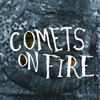 Although I enjoyed Comets on Fire's self-titled debut and its follow up, 2001's Field Recordings from the Sun, I could never have expected the pure, unadulterated rock perfection that is Blue Cathedral. It's the megalithic, all-cylinders-firing psych-rock masterpiece that the band only hinted at with their first two albums.
Although I enjoyed Comets on Fire's self-titled debut and its follow up, 2001's Field Recordings from the Sun, I could never have expected the pure, unadulterated rock perfection that is Blue Cathedral. It's the megalithic, all-cylinders-firing psych-rock masterpiece that the band only hinted at with their first two albums. Even the thought of a two-track, solo guitar release from this AcidMothers Temple founder may have more than a few people reaching for the"wank" button; however, this disc shows a side of Kawabata that usuallyisn't lucky enough to escape the sludge and heavy syrup psych hisgroup's been churning out since the mid-90's. Here are two 30+ minuteimprovs, one acoustic and one electric, both packed with enough reverband delay to make Kawabata's bandmates proud, but both also miles awayfrom the elastic freakouts and deliberate bombast that characterizeAMT. Created just after a trip to Sardinia, where Kawabata claims tohave undergone a spiritual awakening, these pieces are exactly the kindof weightless, shimmering psychedelia that I wish he'd startintegrating within the AMT repertoire. They immediately suggest thosemoments of rural bliss, of remote escape, water and sky, attempted byso many acid-led seekers but realized only by a happy, unsuspectingfew. The first begins in the guitarist's room where simple noteclusters fall into walls of their own reverb and thin blankets of amphum, as if shaken from larger projections of themselves. From here theacoustic begins to climb slow, billowing figures, cyclical and frail,recalling the quieter sides of the already quiet Richard Youngs, JimO'Rourke, and even late-period Fahey whose own love affair with thereverb box seems almost conservative by comparison. Kawabata divideshis single guitar's sound into three separate systems, binding spindlythree-note fragments to columns of their own piling, delayed resonance,rising as if the ruins of some ancient holy space left to loss andvegetation. By the end of this first track, the guitarist seems contentto let even these magical images go, whipping a particularlymelancholic chord progression into a disintegrating ascent, its layersof playback, multiple reverb, and delay assembling a massive shimmeringwaveform, light as breath and coming on without the exhaustion thataccompanies so many AMT climaxes. Rather, Kawabata creates anopen-ended devotional, a piece that truly feels rooted in moments oftranscendence but whose subtlety of flow and improvised constructionkeep it from the force-feeding often associated with his work. For thedisc's title track, he essentially extends the peaking drone from thefirst acoustic piece, this time with an electric guitar and a similararsenal of simple delay and reverb effects. The shift to electricallows for a shimmering structure even more crystalline andotherworldly, mounted by piles of clear feedback that lead ahead-cleaning 45 min. blast along horizons, a droning journey thatbottoms out at the edge of some ancient sun-bleached lake, infinitelycalm. Those looking for proof that Kawabata is capable of curbing thedrug-damaged big riffage for at least a few hours, or those curiousabout how this tireless electric warrior might approach an acousticguitar need look no further than O Si Amos,where even past prejudices bend to the guitarist's reverent approachand the new potential for spiritual therapy latent in his work.
Even the thought of a two-track, solo guitar release from this AcidMothers Temple founder may have more than a few people reaching for the"wank" button; however, this disc shows a side of Kawabata that usuallyisn't lucky enough to escape the sludge and heavy syrup psych hisgroup's been churning out since the mid-90's. Here are two 30+ minuteimprovs, one acoustic and one electric, both packed with enough reverband delay to make Kawabata's bandmates proud, but both also miles awayfrom the elastic freakouts and deliberate bombast that characterizeAMT. Created just after a trip to Sardinia, where Kawabata claims tohave undergone a spiritual awakening, these pieces are exactly the kindof weightless, shimmering psychedelia that I wish he'd startintegrating within the AMT repertoire. They immediately suggest thosemoments of rural bliss, of remote escape, water and sky, attempted byso many acid-led seekers but realized only by a happy, unsuspectingfew. The first begins in the guitarist's room where simple noteclusters fall into walls of their own reverb and thin blankets of amphum, as if shaken from larger projections of themselves. From here theacoustic begins to climb slow, billowing figures, cyclical and frail,recalling the quieter sides of the already quiet Richard Youngs, JimO'Rourke, and even late-period Fahey whose own love affair with thereverb box seems almost conservative by comparison. Kawabata divideshis single guitar's sound into three separate systems, binding spindlythree-note fragments to columns of their own piling, delayed resonance,rising as if the ruins of some ancient holy space left to loss andvegetation. By the end of this first track, the guitarist seems contentto let even these magical images go, whipping a particularlymelancholic chord progression into a disintegrating ascent, its layersof playback, multiple reverb, and delay assembling a massive shimmeringwaveform, light as breath and coming on without the exhaustion thataccompanies so many AMT climaxes. Rather, Kawabata creates anopen-ended devotional, a piece that truly feels rooted in moments oftranscendence but whose subtlety of flow and improvised constructionkeep it from the force-feeding often associated with his work. For thedisc's title track, he essentially extends the peaking drone from thefirst acoustic piece, this time with an electric guitar and a similararsenal of simple delay and reverb effects. The shift to electricallows for a shimmering structure even more crystalline andotherworldly, mounted by piles of clear feedback that lead ahead-cleaning 45 min. blast along horizons, a droning journey thatbottoms out at the edge of some ancient sun-bleached lake, infinitelycalm. Those looking for proof that Kawabata is capable of curbing thedrug-damaged big riffage for at least a few hours, or those curiousabout how this tireless electric warrior might approach an acousticguitar need look no further than O Si Amos,where even past prejudices bend to the guitarist's reverent approachand the new potential for spiritual therapy latent in his work.  Olympic Hopefuls is the brainchild of Erik Applewick and DarrenJackson, who have been in various Minneapolic rock outfits, but neverquite like this. Their debut album is ten tracks of power indie popwith grand designs and great hooks, recorded with full polish andstudio tricks galore, like synthesizers that are only there for part ofa verse, looped samples, and plenty of effects. This is the rareoccasion where that sort of production style actually enhances thesesongs, as they are ripe for this kind of treatment. Sure the songsmight have done well with straightforward rock in a room recording andmixing, but they're so quirky that the xylophones and repeating backupvocals just bring out the more odd sections of the lyrics. The openingtrack, "Imaginary," about a love that no one sees but that is trulythere to the beholder, might come off as creepy in other hands, but theHopefuls make it a sad story of misunderstanding, all the while rockingacross a triumph of love almighty. These are very simple concepts witha new twist, usually, or plaintive confessions of open wounds, butthere's no pretense or artifice, just earnest fun and rock and roll."Drain the Sea" is about a somewhat forbidden love with true feeling,and with lyrics like "your dad says my head is filled with rocks andsand" you almost feel sorry for the protagonist, reaching out to him.But he doesn't want pity, as he's willing to take measures, as laterlyrics approach near threats like "they'd better mind their ownbusiness before they interfere." It's a song like this that is thetypical representation of these songs, slick tricks and bright toneswith just an undertone of madness. So is the essence of the OlympicHopefuls: dazzle them with brilliance, then baffle them with the innerworkings of the mind. It w! orks extremely well, as this album is oneof the best I've heard in a while.
Olympic Hopefuls is the brainchild of Erik Applewick and DarrenJackson, who have been in various Minneapolic rock outfits, but neverquite like this. Their debut album is ten tracks of power indie popwith grand designs and great hooks, recorded with full polish andstudio tricks galore, like synthesizers that are only there for part ofa verse, looped samples, and plenty of effects. This is the rareoccasion where that sort of production style actually enhances thesesongs, as they are ripe for this kind of treatment. Sure the songsmight have done well with straightforward rock in a room recording andmixing, but they're so quirky that the xylophones and repeating backupvocals just bring out the more odd sections of the lyrics. The openingtrack, "Imaginary," about a love that no one sees but that is trulythere to the beholder, might come off as creepy in other hands, but theHopefuls make it a sad story of misunderstanding, all the while rockingacross a triumph of love almighty. These are very simple concepts witha new twist, usually, or plaintive confessions of open wounds, butthere's no pretense or artifice, just earnest fun and rock and roll."Drain the Sea" is about a somewhat forbidden love with true feeling,and with lyrics like "your dad says my head is filled with rocks andsand" you almost feel sorry for the protagonist, reaching out to him.But he doesn't want pity, as he's willing to take measures, as laterlyrics approach near threats like "they'd better mind their ownbusiness before they interfere." It's a song like this that is thetypical representation of these songs, slick tricks and bright toneswith just an undertone of madness. So is the essence of the OlympicHopefuls: dazzle them with brilliance, then baffle them with the innerworkings of the mind. It w! orks extremely well, as this album is oneof the best I've heard in a while.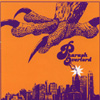 Only one thing, with slight variations, really happens for the hour after this CD starts playing: a bass guitar riff... a massive, filthy, loping beast of a groove that's immensely heavy without being in any way 'metal', or even terribly aggressive. The riff is not complicated, but it is loud (as evidenced by the album's unrelenting near-bootleg-quality tape saturation distortion). The riff has no funk, no drive, it isn't headed anywhere; the guitar barely glides along with it, and the drums do not embellish it.
Only one thing, with slight variations, really happens for the hour after this CD starts playing: a bass guitar riff... a massive, filthy, loping beast of a groove that's immensely heavy without being in any way 'metal', or even terribly aggressive. The riff is not complicated, but it is loud (as evidenced by the album's unrelenting near-bootleg-quality tape saturation distortion). The riff has no funk, no drive, it isn't headed anywhere; the guitar barely glides along with it, and the drums do not embellish it.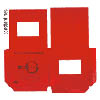 Originally released in 2001 on the Canadian Three Gut Records, theConstantines' debut album is now available via Sub Pop to Americanaudiences. That's not to say that those of us south of the borderaren't already familiar with The Constantines following the success of Shine A Light,one of the best albums of 2003. While The Constantines have often beencompared to the likes of Fugazi, they manage to equally channel thespirit of everyone from Bruce Springsteen to the Replacements. BryWeber's vocals are the band's trademark, carrying the torch forcrooners such as Tom Waits and the above-mentioned Springsteen. Theband's mission is simple, as Webb screams on "Arizona," the album'sopening track: "We want the death of rock n' roll." The irony is thatThe Constantines are more rock n' roll than most other bands in theindie pantheon, and that's their strong point. Anchored by DougMacGregor's confident drumming and Dallas Wehrle's pulsating basslines,the songs on this album maintain an overall energy and aesthetic thatgives the album a seamless quality. While the music is the drivingforce behind the album, Weber's lyrics are perhaps its highlight.Allusions to Isadora Duncan, Danny Rapp, and the Italian Futuristsillustrate an intellectual side not often found in indie rock. Theoverall mood and atmosphere of the album is summed up on the finaltrack, where in "Little Instruments" Weber sings "Mercy little rocker,bleeding guitars / Went out chasing landmarks, fell asleep at the bar /We got an amplifier." They indeed have amplifiers, and let's bethankful for that.
Originally released in 2001 on the Canadian Three Gut Records, theConstantines' debut album is now available via Sub Pop to Americanaudiences. That's not to say that those of us south of the borderaren't already familiar with The Constantines following the success of Shine A Light,one of the best albums of 2003. While The Constantines have often beencompared to the likes of Fugazi, they manage to equally channel thespirit of everyone from Bruce Springsteen to the Replacements. BryWeber's vocals are the band's trademark, carrying the torch forcrooners such as Tom Waits and the above-mentioned Springsteen. Theband's mission is simple, as Webb screams on "Arizona," the album'sopening track: "We want the death of rock n' roll." The irony is thatThe Constantines are more rock n' roll than most other bands in theindie pantheon, and that's their strong point. Anchored by DougMacGregor's confident drumming and Dallas Wehrle's pulsating basslines,the songs on this album maintain an overall energy and aesthetic thatgives the album a seamless quality. While the music is the drivingforce behind the album, Weber's lyrics are perhaps its highlight.Allusions to Isadora Duncan, Danny Rapp, and the Italian Futuristsillustrate an intellectual side not often found in indie rock. Theoverall mood and atmosphere of the album is summed up on the finaltrack, where in "Little Instruments" Weber sings "Mercy little rocker,bleeding guitars / Went out chasing landmarks, fell asleep at the bar /We got an amplifier." They indeed have amplifiers, and let's bethankful for that.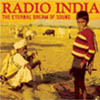 Edited down from hours of raw tapes of radio broadcasts recorded from 1989 to 1996 from New Dehli to Bengal to Calcutta and every point between, Radio India is the newest addition to Sublime Frequencies' growing library of ethnic radio collage. It's a massive two-disc set of low-fidelity radio transmissions that encompass Indian classical ragas, Bollywood pop music, psychedelic rock, lush orchestrals, folk music, electronic dance music and a variety of Indian divas. The patter of on-air DJs, commercials and radio dramas have all been left intact, along with a generous helping of hiss, distortion, sound dropouts and vinyl pops and skips.
Edited down from hours of raw tapes of radio broadcasts recorded from 1989 to 1996 from New Dehli to Bengal to Calcutta and every point between, Radio India is the newest addition to Sublime Frequencies' growing library of ethnic radio collage. It's a massive two-disc set of low-fidelity radio transmissions that encompass Indian classical ragas, Bollywood pop music, psychedelic rock, lush orchestrals, folk music, electronic dance music and a variety of Indian divas. The patter of on-air DJs, commercials and radio dramas have all been left intact, along with a generous helping of hiss, distortion, sound dropouts and vinyl pops and skips.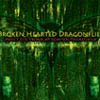 By far the most surprising and unorthodox of SF's newest releases is Broken Hearted Dragonflies,a series of unprocessed field recordings of cicadas and dragonfliesfrom the Southeast Asian lowlands, again captured by producer andrecordist Tucker Martine. It's been very appropriately subtitled Insect Electronica From Southeast Asia,as the ear-piercing high-frequency drones of these insects suggestartificially-rendered, conceptual electronics made by some heretoforeunknown Western minimalist. The spine-chilling, synthetic swoops anddithers of sound are amazingly textural and complex, making it hard tobelieve that these sounds are presented untreated, just as they wererecorded. As a test, I played this for a friend without revealing thesource of the recordings. He immediately began to make all sorts ofassociations, from Alvin Lucier to Ryoji Ikeda to Whitehouse. When Irevealed the actual origin of these synthetic alien tones, his reactionwas shock and disbelief, followed by a jubilation and fascination thatsuch noises exist in nature. Listening to these four extended tracks —given titles like "Particle Swarm Intelligence" and "Brood X" thathighlight their other-worldliness — provoke some very deep thoughtsabout the possibility of hidden patterns in nature. The liner notes bymodern cultural provocateur Peter Lamborn Wilson (AKA Hakim Bey)outline these provocative questions. If this album was the work of ahuman being, we certainly would not hesitate to call it art. However,because these performances come from swarms of supposedly behavorial,mechanical, unselfconscious insects, it belongs to some other realm.The title of the album comes from a Burmese legend about a species ofdragonfly who court their mates with choruses of high-pitched screams.Those that don't succeed in mating eventually scream so loud theirhearts explode and they drop dead. It's an appropriately morbid imagefor this collection of unrelentingly piercing, shrill tones. Listeningon headphones at top volume is enough to send my pulse racing, puttingmy heart in serious danger of spontaneously combusting. Broken Hearted Dragonfliesputs nature back on the map as the source of the most complex,frightening and fascinatingly textural noises in the field of dronemusic. I hope my ears will stop ringing soon.
By far the most surprising and unorthodox of SF's newest releases is Broken Hearted Dragonflies,a series of unprocessed field recordings of cicadas and dragonfliesfrom the Southeast Asian lowlands, again captured by producer andrecordist Tucker Martine. It's been very appropriately subtitled Insect Electronica From Southeast Asia,as the ear-piercing high-frequency drones of these insects suggestartificially-rendered, conceptual electronics made by some heretoforeunknown Western minimalist. The spine-chilling, synthetic swoops anddithers of sound are amazingly textural and complex, making it hard tobelieve that these sounds are presented untreated, just as they wererecorded. As a test, I played this for a friend without revealing thesource of the recordings. He immediately began to make all sorts ofassociations, from Alvin Lucier to Ryoji Ikeda to Whitehouse. When Irevealed the actual origin of these synthetic alien tones, his reactionwas shock and disbelief, followed by a jubilation and fascination thatsuch noises exist in nature. Listening to these four extended tracks —given titles like "Particle Swarm Intelligence" and "Brood X" thathighlight their other-worldliness — provoke some very deep thoughtsabout the possibility of hidden patterns in nature. The liner notes bymodern cultural provocateur Peter Lamborn Wilson (AKA Hakim Bey)outline these provocative questions. If this album was the work of ahuman being, we certainly would not hesitate to call it art. However,because these performances come from swarms of supposedly behavorial,mechanical, unselfconscious insects, it belongs to some other realm.The title of the album comes from a Burmese legend about a species ofdragonfly who court their mates with choruses of high-pitched screams.Those that don't succeed in mating eventually scream so loud theirhearts explode and they drop dead. It's an appropriately morbid imagefor this collection of unrelentingly piercing, shrill tones. Listeningon headphones at top volume is enough to send my pulse racing, puttingmy heart in serious danger of spontaneously combusting. Broken Hearted Dragonfliesputs nature back on the map as the source of the most complex,frightening and fascinatingly textural noises in the field of dronemusic. I hope my ears will stop ringing soon. 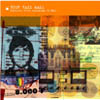 A series of crisply recorded audio snapshots from producer Tucker Martine's travels through the West African countryside in the fall of 1998, Bush Taxi Mali is probably the most disarmingly beautiful of the five new entries to the Sublime Frequencies discography. Capturing singers and instrumentalists in several small villages in the heart of Mali, Martine's impressive recordings recreate a rich, brilliantly rendered portrait of the Mande and Dogon people comprised of guileless performances from guitar and Fulani flute players, choruses of children and stunning vocal performances.
A series of crisply recorded audio snapshots from producer Tucker Martine's travels through the West African countryside in the fall of 1998, Bush Taxi Mali is probably the most disarmingly beautiful of the five new entries to the Sublime Frequencies discography. Capturing singers and instrumentalists in several small villages in the heart of Mali, Martine's impressive recordings recreate a rich, brilliantly rendered portrait of the Mande and Dogon people comprised of guileless performances from guitar and Fulani flute players, choruses of children and stunning vocal performances.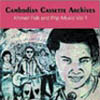 This summer brings five new releases from Sublime Frequencies, arelatively young label that has already gained a reputation as one ofthe most unique sources of ethnic esoterica. Owned and operated byRichard and Alan Bishop of Sun City Girls, Sublime Frequencies hasalready released a clutch of superlative radio collages, fieldrecordings, compilations and video travelogues that have carved out aunique aesthetic that could be loosely termed extra-geographicalpsychedelia. Although their releases are invariably instructive on avariety of ethnic and cultural musical styles, they seem to functionbetter as a kind of World Noise; unfocused and messy, lacking structureand neat categorizations, a dizzying assortment of low-fidelity exoticathat transcends racial and national identities. The first of the newestgrouping of releases is a unique compilation culled from over 150 agingcassettes at the Asian branch of the Oakland public library. Thoughthis collection is subtitled Khmer Folk and Pop,the emphasis is clearly on the Pop side of things, with the majority ofthe tracks utilizing Western instrumentation and combining 60's dancemusic and psychedelic rock with indigenous Khmer styles. Those who haveheard Southeast Asian pop before will know that it can be insufferablyprecious and cutesy, and the music on this CD is no exception.Infantile female and male vocals tackle a variety of cloying pop tunes,with unexceptional keyboards and programmed rhythms, and the occasionalraunchy guitar solo. However, the range of the material chosen for thiscollection is quite remarkable, clearly having been chosen with care torepresent as many different styles as possible, with forays into rockinstrumentals, haunting ballads, garage-psych, dance music, synth-heavynew wave and easy listening jazz. Compiler Mark Gergis has avoided theinclusion of more recent Cambodian popular music, which tends toconsist of tiresome MIDI and karaoke variations on classic Khmer pop ofthe kind represented here. In contrast, most of the tracks here utilizereal instrumentalists and many also evidence unorthodox productiontechniques, such as the dislocated spring echoes of the unknown artiston track 19. Sadly Khmer pop music reached its apex of success in 1970,soon to be undermined by the ensuing civil war and the brutal Angkaregime. Under the tyrant Pol Pot, thousands of Khmer's musicians,artists, teachers and intellectuals were viewed as enemies of therevolution, and a staggering 90% were executed at the S-21interrogation center. Many of the post-1970 tracks on this compilationwere recorded by escapees throughout the Cambodian diaspora — fromThailand to Long Beach to Rhode Island. It's hard to imagine, listeningto the blissful innocence of tracks like "Don't Let My GirlfriendTickle Me," that at one time, merely performing this music was groundsfor arrest and execution.
This summer brings five new releases from Sublime Frequencies, arelatively young label that has already gained a reputation as one ofthe most unique sources of ethnic esoterica. Owned and operated byRichard and Alan Bishop of Sun City Girls, Sublime Frequencies hasalready released a clutch of superlative radio collages, fieldrecordings, compilations and video travelogues that have carved out aunique aesthetic that could be loosely termed extra-geographicalpsychedelia. Although their releases are invariably instructive on avariety of ethnic and cultural musical styles, they seem to functionbetter as a kind of World Noise; unfocused and messy, lacking structureand neat categorizations, a dizzying assortment of low-fidelity exoticathat transcends racial and national identities. The first of the newestgrouping of releases is a unique compilation culled from over 150 agingcassettes at the Asian branch of the Oakland public library. Thoughthis collection is subtitled Khmer Folk and Pop,the emphasis is clearly on the Pop side of things, with the majority ofthe tracks utilizing Western instrumentation and combining 60's dancemusic and psychedelic rock with indigenous Khmer styles. Those who haveheard Southeast Asian pop before will know that it can be insufferablyprecious and cutesy, and the music on this CD is no exception.Infantile female and male vocals tackle a variety of cloying pop tunes,with unexceptional keyboards and programmed rhythms, and the occasionalraunchy guitar solo. However, the range of the material chosen for thiscollection is quite remarkable, clearly having been chosen with care torepresent as many different styles as possible, with forays into rockinstrumentals, haunting ballads, garage-psych, dance music, synth-heavynew wave and easy listening jazz. Compiler Mark Gergis has avoided theinclusion of more recent Cambodian popular music, which tends toconsist of tiresome MIDI and karaoke variations on classic Khmer pop ofthe kind represented here. In contrast, most of the tracks here utilizereal instrumentalists and many also evidence unorthodox productiontechniques, such as the dislocated spring echoes of the unknown artiston track 19. Sadly Khmer pop music reached its apex of success in 1970,soon to be undermined by the ensuing civil war and the brutal Angkaregime. Under the tyrant Pol Pot, thousands of Khmer's musicians,artists, teachers and intellectuals were viewed as enemies of therevolution, and a staggering 90% were executed at the S-21interrogation center. Many of the post-1970 tracks on this compilationwere recorded by escapees throughout the Cambodian diaspora — fromThailand to Long Beach to Rhode Island. It's hard to imagine, listeningto the blissful innocence of tracks like "Don't Let My GirlfriendTickle Me," that at one time, merely performing this music was groundsfor arrest and execution. 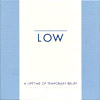 Low has amassed an incredible body of work in the eleven years sincetheir inception, this is more than likely due to the fact that Lowrespect their job as musicians more seriously than nearly every rockband in history, working seemingly overtime, writing music andconstantly touring. What started out as a few 7" singles andcompilation releases has exploded into a three-disc set of music plus afourth disc: a double-sided DVD with some home made documentaries andall their music videos! For a fan, this collection is a gift, packagedin what even looks like a pleasant, compact gift box. Unwrapping eachaudio pesent contained within is like Christmas for an easily excitablechild, featuring numerous recordings never commercially released,single a-sides and b-sides, compilation tracks, demos, and weird bitsand pieces the band never intended to go on any records. It might soundlike a mess to somebody just scratching the surface, yet, between someof the not-so-ready for our record bits are some of their mostincredible, and some of their most popular live songs. Early, scratchyrecordings of songs like "Lullaby," "Prisoner," and their cover ofWire's "Heartbeat" and the painful cover of Journey's "Open Arms" areprobably not going to find any new fans, but their popular livemainstay "Venus," covers of George Harrison's "Long, Long, Long," andSoul Coughing's "Blue Eyed Devil," along with vinyl LP bonus/raresingle tracks like "Tomorrow One," and "Don't Carry It All," couldeasily be some of what would make up a Greatest Hitsrecord. Each of the three CDs come painfully close to the 80 minutemark, the second even includes some live randomness of Low performingtheir songs in Misfits style, and while the documentaries are homegrown, they're entertaining and personal insights to the band and kidand their travels. Perhaps sometimes it's a bit too close and personal,but then again, anybody who know's Low's music knows they're prettyclose (or at least are good at giving that impression) to begin with.
Low has amassed an incredible body of work in the eleven years sincetheir inception, this is more than likely due to the fact that Lowrespect their job as musicians more seriously than nearly every rockband in history, working seemingly overtime, writing music andconstantly touring. What started out as a few 7" singles andcompilation releases has exploded into a three-disc set of music plus afourth disc: a double-sided DVD with some home made documentaries andall their music videos! For a fan, this collection is a gift, packagedin what even looks like a pleasant, compact gift box. Unwrapping eachaudio pesent contained within is like Christmas for an easily excitablechild, featuring numerous recordings never commercially released,single a-sides and b-sides, compilation tracks, demos, and weird bitsand pieces the band never intended to go on any records. It might soundlike a mess to somebody just scratching the surface, yet, between someof the not-so-ready for our record bits are some of their mostincredible, and some of their most popular live songs. Early, scratchyrecordings of songs like "Lullaby," "Prisoner," and their cover ofWire's "Heartbeat" and the painful cover of Journey's "Open Arms" areprobably not going to find any new fans, but their popular livemainstay "Venus," covers of George Harrison's "Long, Long, Long," andSoul Coughing's "Blue Eyed Devil," along with vinyl LP bonus/raresingle tracks like "Tomorrow One," and "Don't Carry It All," couldeasily be some of what would make up a Greatest Hitsrecord. Each of the three CDs come painfully close to the 80 minutemark, the second even includes some live randomness of Low performingtheir songs in Misfits style, and while the documentaries are homegrown, they're entertaining and personal insights to the band and kidand their travels. Perhaps sometimes it's a bit too close and personal,but then again, anybody who know's Low's music knows they're prettyclose (or at least are good at giving that impression) to begin with.  This double CD set reissues what is, in my opinion, the most thought-provoking and satisfying album by Organum, originally released as an LP from the mid-1980s. That it is paired with a frustrating singles compilation called "Rara Avis" makes me stop short from giving it a whole-hearted endorsement.
This double CD set reissues what is, in my opinion, the most thought-provoking and satisfying album by Organum, originally released as an LP from the mid-1980s. That it is paired with a frustrating singles compilation called "Rara Avis" makes me stop short from giving it a whole-hearted endorsement.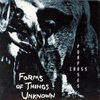 Forms of Things Unknown is primarily the work of multi-instrumentalistand windplayer Ferrara Brain Pan, who has previously played with BoydRice and legendary krautrockers Faust. For his debut EP as Form ofThings Unknown, the artist tackles a galaxy of wind instruments,including bass clarinet, saxophone, flute, recorder, Tibetan thighbonetrumpet, didgeridoo and shakahuchi. Multiple overdubs and liberal sonicmutations push the material into the sort of dark, uneasy territoriesoccupied by Coil and Nurse With Wound, who seem to have exerted heavyinfluence on Mr. Pan. The first two tracks are two movements of thesame 16-minute piece, amusingly entitled "Black Candles &Pentagrams 'n Shit." Extended tape loops of the aforementioned hornscirculate slowly, as deep, vibratory foghorns blow across a murkylagoon at midnight. Occasional swipes of backwards-tracked soundcontribute a ritualistic mood to the proceedings, but the artistgracefully breathlessly bends and bows his performance to mesmericeffect. The next two tracks represent an instrumental and vocalarrangement of an anonymously composed 14th century devotional song.Monsieur Pan plays his courtly medieval recorders with aplomb, andvocalist Shannon Wolfe beautifully renders the Latin lyrics. The songis immediately reminiscent of Shirley and Dolly Collins and other1960's neo-medievalists, and that's enough to keep me smiling forweeks. The last track is an unorthodox arrangement of UK punk legendand former Buzzcock Howard Devoto's "Stupid Blood," from his latter dayLuxuria project. The song trips along at its own turgid pace, with Mr.Pan providing pleasurable blasts of layered brass and vocalist BobAyres delivering the lyrics in a stately baritone. The EP ends with anincredibly brief answering machine message left for Ferrara Brain Panby one Babs Santini, which has prompted the artist to label each copyof this EP with a sticker declaring "Special guest appearance by SteveStapleton of Nurse With Wound," thus hopefully luring unsuspecting NWWcompletists to buy his music. However misleading and manipulative thisstrategy seems, I don't think avid Nurse fans would be disappointed by Cross Purposesin the slightest, should they be tricked into purchasing it. On thecontrary, this is a dynamic and intriguing work, just the sort of thingyour average NWW fan would be in for.
Forms of Things Unknown is primarily the work of multi-instrumentalistand windplayer Ferrara Brain Pan, who has previously played with BoydRice and legendary krautrockers Faust. For his debut EP as Form ofThings Unknown, the artist tackles a galaxy of wind instruments,including bass clarinet, saxophone, flute, recorder, Tibetan thighbonetrumpet, didgeridoo and shakahuchi. Multiple overdubs and liberal sonicmutations push the material into the sort of dark, uneasy territoriesoccupied by Coil and Nurse With Wound, who seem to have exerted heavyinfluence on Mr. Pan. The first two tracks are two movements of thesame 16-minute piece, amusingly entitled "Black Candles &Pentagrams 'n Shit." Extended tape loops of the aforementioned hornscirculate slowly, as deep, vibratory foghorns blow across a murkylagoon at midnight. Occasional swipes of backwards-tracked soundcontribute a ritualistic mood to the proceedings, but the artistgracefully breathlessly bends and bows his performance to mesmericeffect. The next two tracks represent an instrumental and vocalarrangement of an anonymously composed 14th century devotional song.Monsieur Pan plays his courtly medieval recorders with aplomb, andvocalist Shannon Wolfe beautifully renders the Latin lyrics. The songis immediately reminiscent of Shirley and Dolly Collins and other1960's neo-medievalists, and that's enough to keep me smiling forweeks. The last track is an unorthodox arrangement of UK punk legendand former Buzzcock Howard Devoto's "Stupid Blood," from his latter dayLuxuria project. The song trips along at its own turgid pace, with Mr.Pan providing pleasurable blasts of layered brass and vocalist BobAyres delivering the lyrics in a stately baritone. The EP ends with anincredibly brief answering machine message left for Ferrara Brain Panby one Babs Santini, which has prompted the artist to label each copyof this EP with a sticker declaring "Special guest appearance by SteveStapleton of Nurse With Wound," thus hopefully luring unsuspecting NWWcompletists to buy his music. However misleading and manipulative thisstrategy seems, I don't think avid Nurse fans would be disappointed by Cross Purposesin the slightest, should they be tricked into purchasing it. On thecontrary, this is a dynamic and intriguing work, just the sort of thingyour average NWW fan would be in for. At its simplest, this album proves yet again what exactly is wrong withthe major record label system: they don't know what to do with goodtalent, and they relentlessly promote the mediocre variety. Old 97swere the darlings of the indie rock scene, releasing one album on theirown and another for Bloodshot Records, throwing out their own brand ofpunkified countryness with a classic Old West feel. They wereeventually snatched up by Elektra, where they released three morerecords, every one an attempt by the band and the label — more thelatter than the former, I'd wager — to get that one true hit, makingthe songs poppier and poppier as they went along. They did pretty well,but their albums never really hit the big time, and eventually labeland band parted ways. This obviously triggered a return to the DIYmoments of their past, as their first album for their new label is atrue awakening of potential, and a bold statement about where a bandcan go on their own if they're not prodded and poked. Old 97s of oldhad fire and spunk, but still held on to their roots, maintaining aflavor and sound that was decidedly uncommercial, as it was unsurewhere they fit in. That feel, that classic "we don't know if this isgoing to work" vibe, is all over these songs, and the band sound betterthan ever. This is wholesale rejuvenation, with every band memberpulling out their very best, and letting the true directions of theband set in. Drag It Upwas recorded on eight tracks, and most vocals recorded in one room withone microphone. It sounds dirty, uneven, and like the band wanted totake chances. The record features guitarist Ken Bethea's first stab atlead vocals on "Coahuila," and while not a brilliant first effort, thetrack has the most energy of any on the record. Bassist Murry Hammondsings a few tracks, as usual, and as usual I'm not real fond of thosesongs, though they are still great slices of storytelling. When allpieces fall into place, it's like all the stars aligned and the trueshape of the constellation can be revealed. Rhett Miller's clean wailis better than ever on songs like "Bloomington" and "The New Kid," andhe even warbles here and there, letting the little imperfections makeit all better. What it all adds up to is that five albums along Old 97sare experiencing a rebirth, and the sky's the limit.
At its simplest, this album proves yet again what exactly is wrong withthe major record label system: they don't know what to do with goodtalent, and they relentlessly promote the mediocre variety. Old 97swere the darlings of the indie rock scene, releasing one album on theirown and another for Bloodshot Records, throwing out their own brand ofpunkified countryness with a classic Old West feel. They wereeventually snatched up by Elektra, where they released three morerecords, every one an attempt by the band and the label — more thelatter than the former, I'd wager — to get that one true hit, makingthe songs poppier and poppier as they went along. They did pretty well,but their albums never really hit the big time, and eventually labeland band parted ways. This obviously triggered a return to the DIYmoments of their past, as their first album for their new label is atrue awakening of potential, and a bold statement about where a bandcan go on their own if they're not prodded and poked. Old 97s of oldhad fire and spunk, but still held on to their roots, maintaining aflavor and sound that was decidedly uncommercial, as it was unsurewhere they fit in. That feel, that classic "we don't know if this isgoing to work" vibe, is all over these songs, and the band sound betterthan ever. This is wholesale rejuvenation, with every band memberpulling out their very best, and letting the true directions of theband set in. Drag It Upwas recorded on eight tracks, and most vocals recorded in one room withone microphone. It sounds dirty, uneven, and like the band wanted totake chances. The record features guitarist Ken Bethea's first stab atlead vocals on "Coahuila," and while not a brilliant first effort, thetrack has the most energy of any on the record. Bassist Murry Hammondsings a few tracks, as usual, and as usual I'm not real fond of thosesongs, though they are still great slices of storytelling. When allpieces fall into place, it's like all the stars aligned and the trueshape of the constellation can be revealed. Rhett Miller's clean wailis better than ever on songs like "Bloomington" and "The New Kid," andhe even warbles here and there, letting the little imperfections makeit all better. What it all adds up to is that five albums along Old 97sare experiencing a rebirth, and the sky's the limit. 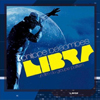 Philippe Besombes was a Ph.D. student with an abiding interest incontemporary electro-acoustic music, an interest that led him tocollaborate and play with Jean Michel Jarre, Jean-Francois Dessoliers(as PJF) and Jean-Louis Rizet (as Pole). Both Besombes' and Pole'snotoriety have been sealed by their inclusion on Steven Stapleton andJohn Fothergill's famous Nurse With Wound Influence List, whichappeared in the liner notes for NWW's debut album. Israel's MIO recordshas been doing quite a good job in issuing rarities from the NWW listlately, and this CD is no exception. Comprising the entire original1974 LibraLP on Tapioca (composed as the soundtrack to the film of the samename), MIO also generously adds four tracks from the same general timeperiod, filling out the running time of the disc to 76 minutes.Besombes' unorthodox work nervously straddles two strikingly differentdimensions - avant-garde electronic composition and the contemporaryEuropean prog and psych-rock prevalent at the time. Besombes negotiatesthis dichotomy rather brilliantly, producing a spectacularly uniquealbum that pulls in influences seemingly from everything the artistever heard in his lifetime. The paltry three samples below simply can'treflect the true variety of approaches on the album, from the jarringmetallic drones and disturbingly strangled vocals of "La Plage" to thecosmic Indian twang of "Raggacountry" to the languid fuzz guitar loungeof "Ballade en Velo." Besombes employs various synthesizers, Moogs,electric sitars, oscillators and a studio full of rock session playersto achieve the stunning dynamics of the album. "Boogimmick" is asynth-drenched heavy blues stomp in the style of Hawkwind, but alsoseeming simultaneously to function as an absurdist parody of suchmusic. "Hache 6" stands out, a heavily phased funk excursion,reminiscent of the kind of eclectic library music uncovered by LukeVibert and Barry 7 on their Lo Recordings compilations. Before thealbum is over, I'm treated to an atonal free-jazz meltdown ("LaVille"), a science-fiction fanfare of mind-altering proportions ("LesCosmonautes") and a lovely psych ballad ("Tis a Song"). Bonus tracksrange from a funky breakbeat jazz number with female vocals to anamazingly textured, 20-plus minute piece for prepared piano. Libra is a fantastic album, in that rare category of storied, obscure albums that actually deserve their reputation.
Philippe Besombes was a Ph.D. student with an abiding interest incontemporary electro-acoustic music, an interest that led him tocollaborate and play with Jean Michel Jarre, Jean-Francois Dessoliers(as PJF) and Jean-Louis Rizet (as Pole). Both Besombes' and Pole'snotoriety have been sealed by their inclusion on Steven Stapleton andJohn Fothergill's famous Nurse With Wound Influence List, whichappeared in the liner notes for NWW's debut album. Israel's MIO recordshas been doing quite a good job in issuing rarities from the NWW listlately, and this CD is no exception. Comprising the entire original1974 LibraLP on Tapioca (composed as the soundtrack to the film of the samename), MIO also generously adds four tracks from the same general timeperiod, filling out the running time of the disc to 76 minutes.Besombes' unorthodox work nervously straddles two strikingly differentdimensions - avant-garde electronic composition and the contemporaryEuropean prog and psych-rock prevalent at the time. Besombes negotiatesthis dichotomy rather brilliantly, producing a spectacularly uniquealbum that pulls in influences seemingly from everything the artistever heard in his lifetime. The paltry three samples below simply can'treflect the true variety of approaches on the album, from the jarringmetallic drones and disturbingly strangled vocals of "La Plage" to thecosmic Indian twang of "Raggacountry" to the languid fuzz guitar loungeof "Ballade en Velo." Besombes employs various synthesizers, Moogs,electric sitars, oscillators and a studio full of rock session playersto achieve the stunning dynamics of the album. "Boogimmick" is asynth-drenched heavy blues stomp in the style of Hawkwind, but alsoseeming simultaneously to function as an absurdist parody of suchmusic. "Hache 6" stands out, a heavily phased funk excursion,reminiscent of the kind of eclectic library music uncovered by LukeVibert and Barry 7 on their Lo Recordings compilations. Before thealbum is over, I'm treated to an atonal free-jazz meltdown ("LaVille"), a science-fiction fanfare of mind-altering proportions ("LesCosmonautes") and a lovely psych ballad ("Tis a Song"). Bonus tracksrange from a funky breakbeat jazz number with female vocals to anamazingly textured, 20-plus minute piece for prepared piano. Libra is a fantastic album, in that rare category of storied, obscure albums that actually deserve their reputation. Geir Jenssen lives in a different world. From his Artic Circle perchthe man called Biosphere is building a body of work as iconoclastic asAphex Twin, with as much eerie remove and accidental influence. Albumslike Patashnik and Substrataare landmarks in ambient music not because they spawned a millionrip-offs but because they work within a recognizable stylisticblueprint to create absolutely alien music, threatening total immersionto even the most cautious of "background" listeners. Jenssen's last,2002's Shenzhou found him treading further towards alienatingextremes, something like a pitch-black homage to Debussy, withorchestra samples stretched thin and opaque across an ocean of icy,crevice-filled ambience (in other words, what we all wished Drukqs had been). Autour,commissioned by French radio last year, not only rejects anything closeto a wide "radio" audience, but it is by far the most trying Biosphererelease thus far, with Jenssen moving past the beat-less transparenciesbegun with Substrata and into a harsh meditation on deep-space,a 74-minute confined drift that begins well into the air-less upperregions and does not conclude until positioned hopelessly within adimensionless dump-off on the darker side of some heavenly body.Occupying a third of the disc's length, the opening "Translation" actslike the final kiss-off to Earth and the earthen sounds that often finda place in Biosphere music. A rebus of plastic tones, entwined withenough care to erase all human touch, becomes a sky-like ceiling withwhich groaning engine sounds and whining drones struggle in a pitilessslipping, past the threshold and into the heart of Autour. Apart from a track or two based around a few distorted samples from a 60s radio dramatization of Jules Verne's De la Terre à la Lune(the "focus" of the 2003 commission) and actual recordings of MIRastronauts, the majority of the disc develops a vacuous, unsettlingatmosphere made up of seriously subsonic bass frequencies and shrill,synthetic tones dividing and encasing the deliberate arcs and hiddentextures of each of the nine "movements." By the sixth track,"Circulaire," the trip has arrived at a false ending of sorts, anoff-putting climax where the piece grounds out to two dissentingsounds, one a near-inaudible below-bass pulse and the other thesinister calm of a solid flatline. From this remote place, more Onkyothan Eno, Jenssen really has nowhere to drift except slowly backtowards the beginning, to the lush plasticities of "Trombant," almostcoming full circle on the opening track but stopping short, allowingmelody and lush texture enough footing only to remind us of what hasbeen left behind. Melodies emerge, like the aimless cosmonaut voicesamples, as if beamed from a great distance, light years into theblack, like ghosts of a human presence long since abandoned. Autouris not easy listening, and if it doesn't stand as the most returnableplace in the Biosphere catalog, it's only because Jenssen has neversounded so remote and thoroughly haunting.
Geir Jenssen lives in a different world. From his Artic Circle perchthe man called Biosphere is building a body of work as iconoclastic asAphex Twin, with as much eerie remove and accidental influence. Albumslike Patashnik and Substrataare landmarks in ambient music not because they spawned a millionrip-offs but because they work within a recognizable stylisticblueprint to create absolutely alien music, threatening total immersionto even the most cautious of "background" listeners. Jenssen's last,2002's Shenzhou found him treading further towards alienatingextremes, something like a pitch-black homage to Debussy, withorchestra samples stretched thin and opaque across an ocean of icy,crevice-filled ambience (in other words, what we all wished Drukqs had been). Autour,commissioned by French radio last year, not only rejects anything closeto a wide "radio" audience, but it is by far the most trying Biosphererelease thus far, with Jenssen moving past the beat-less transparenciesbegun with Substrata and into a harsh meditation on deep-space,a 74-minute confined drift that begins well into the air-less upperregions and does not conclude until positioned hopelessly within adimensionless dump-off on the darker side of some heavenly body.Occupying a third of the disc's length, the opening "Translation" actslike the final kiss-off to Earth and the earthen sounds that often finda place in Biosphere music. A rebus of plastic tones, entwined withenough care to erase all human touch, becomes a sky-like ceiling withwhich groaning engine sounds and whining drones struggle in a pitilessslipping, past the threshold and into the heart of Autour. Apart from a track or two based around a few distorted samples from a 60s radio dramatization of Jules Verne's De la Terre à la Lune(the "focus" of the 2003 commission) and actual recordings of MIRastronauts, the majority of the disc develops a vacuous, unsettlingatmosphere made up of seriously subsonic bass frequencies and shrill,synthetic tones dividing and encasing the deliberate arcs and hiddentextures of each of the nine "movements." By the sixth track,"Circulaire," the trip has arrived at a false ending of sorts, anoff-putting climax where the piece grounds out to two dissentingsounds, one a near-inaudible below-bass pulse and the other thesinister calm of a solid flatline. From this remote place, more Onkyothan Eno, Jenssen really has nowhere to drift except slowly backtowards the beginning, to the lush plasticities of "Trombant," almostcoming full circle on the opening track but stopping short, allowingmelody and lush texture enough footing only to remind us of what hasbeen left behind. Melodies emerge, like the aimless cosmonaut voicesamples, as if beamed from a great distance, light years into theblack, like ghosts of a human presence long since abandoned. Autouris not easy listening, and if it doesn't stand as the most returnableplace in the Biosphere catalog, it's only because Jenssen has neversounded so remote and thoroughly haunting.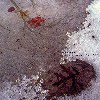 Empress has always been fond of devilishly deliberate songs, The Sounds They Madeis no different. Each tune is plucked and sung and crafted with utterconcentration, though without anything so technical which might requiresuch concentration. The obvious question is, "Why work with suchslowness?", or, "Why plod through songs through which even the mostrudimentary musician should be able to sprint?" The most convincinganswer I came up with was that the deliberateness prolongs thesensation and experience of the soft-spoken beauty of these songs. In"The Worry and the Wine," the initial melody sounds like the second daysessions of a self-taught guitarist just learning how to piece togethermusical sentences (such a guitar-wielding autodidact will stutter andstop and start again on some newfound melody, all the while clinging tothe elegance found within this newly discovered progression of sounds).The space between the notes becomes just as long (and as musical) asthe notes themselves. Each anticipatory moment between the notes hasthat air of potential mistake, where a sharp or flat tone could causethe song to fall apart or at least break down briefly. Yet the melodyhardly falters, and soon Nicola Hodgkinson's lovely vocals fade in andblanket the melody with a perfect complement. The effect is ratherstunning, like being witness to genesis of a modern indie lullaby. Theentire album is a collection of lullabies: hushed and soft-spokenvocals like windblown wisps of snow and guitars supplying notes onlywhere there is the barest of need. The novelty Empress adds to theirlullabies is a slight twist of electronics (echoey clicks and reverbswoop in between notes and swirl around playfully). "For Trains" has ajittery stop and start which sounds like the skipping of a CD (I wasquite convinced that my CD player's laser was doing quite a jig on thesurface of the CD) but then the crystalline and unwavering vocalsconfirm that it is pure artifice and not a surface scratch or faultydisc. The song itself (jittery music with smooth vocals) is an abrasivelisten and provides the hardest lullaby to listen to on the album. Itis not unpleasant exactly, but rather it is not the song to fall asleepto. Amidst the more fleshed-out numbers on the album are sometwo-minute spacers, songs in their barest form, skeletons almost. Theysubdivide the album with simple repeated themes, bringing the entiretimbre down to an even more narcotic level. Empress can sometimes beelusive with their quietude, so be careful that the few songs on thealbum which demand a more alert listen do not pass by too softly.
Empress has always been fond of devilishly deliberate songs, The Sounds They Madeis no different. Each tune is plucked and sung and crafted with utterconcentration, though without anything so technical which might requiresuch concentration. The obvious question is, "Why work with suchslowness?", or, "Why plod through songs through which even the mostrudimentary musician should be able to sprint?" The most convincinganswer I came up with was that the deliberateness prolongs thesensation and experience of the soft-spoken beauty of these songs. In"The Worry and the Wine," the initial melody sounds like the second daysessions of a self-taught guitarist just learning how to piece togethermusical sentences (such a guitar-wielding autodidact will stutter andstop and start again on some newfound melody, all the while clinging tothe elegance found within this newly discovered progression of sounds).The space between the notes becomes just as long (and as musical) asthe notes themselves. Each anticipatory moment between the notes hasthat air of potential mistake, where a sharp or flat tone could causethe song to fall apart or at least break down briefly. Yet the melodyhardly falters, and soon Nicola Hodgkinson's lovely vocals fade in andblanket the melody with a perfect complement. The effect is ratherstunning, like being witness to genesis of a modern indie lullaby. Theentire album is a collection of lullabies: hushed and soft-spokenvocals like windblown wisps of snow and guitars supplying notes onlywhere there is the barest of need. The novelty Empress adds to theirlullabies is a slight twist of electronics (echoey clicks and reverbswoop in between notes and swirl around playfully). "For Trains" has ajittery stop and start which sounds like the skipping of a CD (I wasquite convinced that my CD player's laser was doing quite a jig on thesurface of the CD) but then the crystalline and unwavering vocalsconfirm that it is pure artifice and not a surface scratch or faultydisc. The song itself (jittery music with smooth vocals) is an abrasivelisten and provides the hardest lullaby to listen to on the album. Itis not unpleasant exactly, but rather it is not the song to fall asleepto. Amidst the more fleshed-out numbers on the album are sometwo-minute spacers, songs in their barest form, skeletons almost. Theysubdivide the album with simple repeated themes, bringing the entiretimbre down to an even more narcotic level. Empress can sometimes beelusive with their quietude, so be careful that the few songs on thealbum which demand a more alert listen do not pass by too softly. With their tenth album, this Portland collective manages to release awildly organic mix of electronics and jazz that blends both avant-gardetendencies with more traditional song structures. Behind the Barberstartsoff with the introductory percussion rhythms and building electronic,string, and brass chaos of "Do The Slim Jim" before launching into thethe sprawling 16-minute "Slits Aranda." The track starts off with mutedbrass chords and shimmering cymbals that would not have been out ofplace on Miles Davis's Sketches of Spain before moving into apropulsive jazz sketch complete with female vocals and bellowingsaxophone courtesy of Jackie-O Motherfucker's Jeff Brown. The trackthen slides into a stew of horns and improvisational reeds beforepicking up again in the final three minutes with the original thumpingbass, percussion, and saxophone for a return to the track's main theme.While "Slits Aranda" shows Rollerball at their best, mixing traditionalstructure with avant-grade notions, other tracks highlight the band'sability to collaborate with guest artists. On "Burning Light," Portlandelectronic artist Nudge molds the band's sound in a way thatdeconstructs the various percussive and melodic elements, mixing eachinstrument (vocals included) to produce a cohesive blend that allowseach sound to retain its individual timbre. In the final three tracksof the album, Rollerball shifts into experimental mode, tinkering withgenres ranging from dub to free-form jazz. Behind the Barber'sfinal track, "Fake Tan," dissolves into a mix of a electronic chaos andmystical chants with a slow and chilling fade that ends the album on amore subtle note.
With their tenth album, this Portland collective manages to release awildly organic mix of electronics and jazz that blends both avant-gardetendencies with more traditional song structures. Behind the Barberstartsoff with the introductory percussion rhythms and building electronic,string, and brass chaos of "Do The Slim Jim" before launching into thethe sprawling 16-minute "Slits Aranda." The track starts off with mutedbrass chords and shimmering cymbals that would not have been out ofplace on Miles Davis's Sketches of Spain before moving into apropulsive jazz sketch complete with female vocals and bellowingsaxophone courtesy of Jackie-O Motherfucker's Jeff Brown. The trackthen slides into a stew of horns and improvisational reeds beforepicking up again in the final three minutes with the original thumpingbass, percussion, and saxophone for a return to the track's main theme.While "Slits Aranda" shows Rollerball at their best, mixing traditionalstructure with avant-grade notions, other tracks highlight the band'sability to collaborate with guest artists. On "Burning Light," Portlandelectronic artist Nudge molds the band's sound in a way thatdeconstructs the various percussive and melodic elements, mixing eachinstrument (vocals included) to produce a cohesive blend that allowseach sound to retain its individual timbre. In the final three tracksof the album, Rollerball shifts into experimental mode, tinkering withgenres ranging from dub to free-form jazz. Behind the Barber'sfinal track, "Fake Tan," dissolves into a mix of a electronic chaos andmystical chants with a slow and chilling fade that ends the album on amore subtle note. 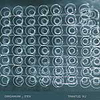 This four-track, 16-minute CD marks the first collaboration between twoof the prime movers of experimental sound. The brevity of the albummakes it somewhat difficult to get a handle on. Over the years, I'vecome to expect long-form, immersive soundscapes from both of theseartists - whether the long, shape-shifting textural drones of Organumor the multiple-part conceptual movements of Z'ev. At about fourminutes each, each of these tracks seem oddly truncated, resolvingthemselves just as they begin to become interesting. With artists asintelligent and purposeful as these, I'm not ready to assume that thiswas a miscalculation or just plain laziness. Rather, the brevity of Tinnitus Vumay be a reflection of its theme, which in this case appears to behearing loss. Tinnitus is an affliction of hearing in which thesufferer hears persistent buzzing, high-pitched ringing, televisionstatic or wind noise. David Jackman and Stefan Weisser both apparentlysuffer from intermittent tinnitus, and this work can be seen as anattempt to accurately reflect the experience of this hearing disorderto the unafflicted listener. Each piece begins and ends with a few barsof piano, but in between is an electronic storm of thought-cancelingwhite noise, curling metallic drones, and undifferentiated swarms ofwhat sound like tiny robotic gnats. The effect is quite brilliant atmoments, especially towards the end of the third track, when for amoment I thought that my hearing actually had dropped out for a moment,as sometimes happens the day after a particularly loud concert. Thiswas merely an auditory illusion borne of the cleverly renderedproduction of the track. There is none of Z'ev's trademark percussionin the mix, at least not in any recognizable form, so the album ends upcloser in sound to Organum's work, which is not a bad thing. In theend, I was left wanting more from this collaboration, and it looks likeI may get my wish soon, as a full-length collaboration is planned forrelease soon on Die Stadt.
This four-track, 16-minute CD marks the first collaboration between twoof the prime movers of experimental sound. The brevity of the albummakes it somewhat difficult to get a handle on. Over the years, I'vecome to expect long-form, immersive soundscapes from both of theseartists - whether the long, shape-shifting textural drones of Organumor the multiple-part conceptual movements of Z'ev. At about fourminutes each, each of these tracks seem oddly truncated, resolvingthemselves just as they begin to become interesting. With artists asintelligent and purposeful as these, I'm not ready to assume that thiswas a miscalculation or just plain laziness. Rather, the brevity of Tinnitus Vumay be a reflection of its theme, which in this case appears to behearing loss. Tinnitus is an affliction of hearing in which thesufferer hears persistent buzzing, high-pitched ringing, televisionstatic or wind noise. David Jackman and Stefan Weisser both apparentlysuffer from intermittent tinnitus, and this work can be seen as anattempt to accurately reflect the experience of this hearing disorderto the unafflicted listener. Each piece begins and ends with a few barsof piano, but in between is an electronic storm of thought-cancelingwhite noise, curling metallic drones, and undifferentiated swarms ofwhat sound like tiny robotic gnats. The effect is quite brilliant atmoments, especially towards the end of the third track, when for amoment I thought that my hearing actually had dropped out for a moment,as sometimes happens the day after a particularly loud concert. Thiswas merely an auditory illusion borne of the cleverly renderedproduction of the track. There is none of Z'ev's trademark percussionin the mix, at least not in any recognizable form, so the album ends upcloser in sound to Organum's work, which is not a bad thing. In theend, I was left wanting more from this collaboration, and it looks likeI may get my wish soon, as a full-length collaboration is planned forrelease soon on Die Stadt. 
